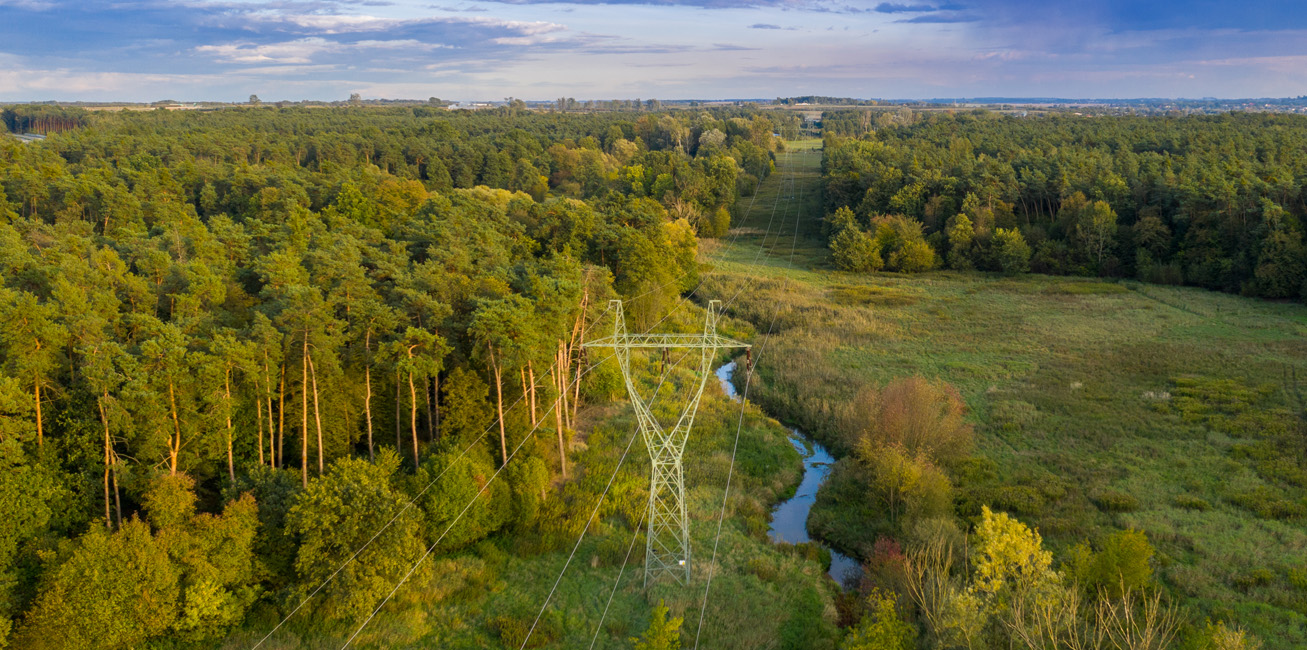The unavoidable consequences of our investments include the loss of some habitats due to tree cutting in the technological strip of the line, among others, in forest areas. However, by using over-forest or forest pole technology, we manage to significantly reduce tree cutting – sometimes only to pole locations. 'Forest' poles are poles that, together with V-shaped insulator chains, allow the wires to be hung closer to the pole structure, i.e. allowing the width of the line to be reduced, which translates into cutting fewer trees. By contrast, the use of 'over-forest' poles means that the line conductors are suspended above the treetops.
At the stages of project implementation and operation, we endeavour to ensure that tree cutting works in the technological strip of the line are carried out in a way that limits their impact on the natural environment. These works are carried out outside the breeding season and, if necessary, under the supervision of naturalists, in particular ornithologists or chiropterologists.
